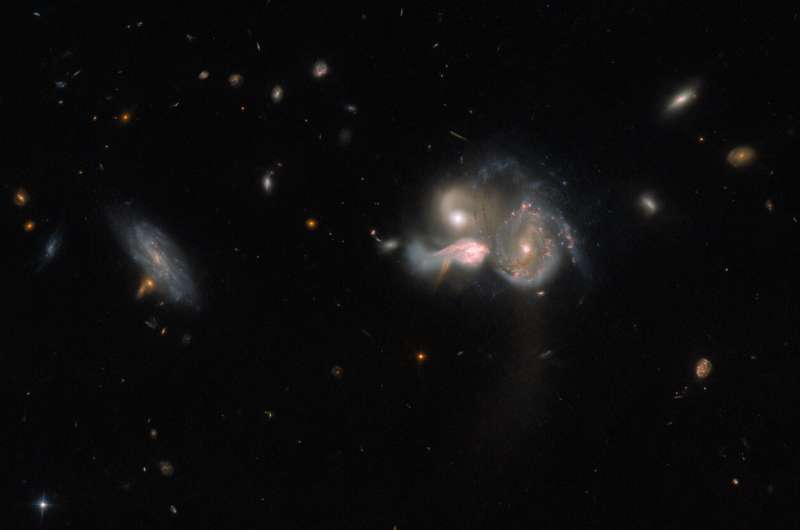This article has been reviewed according to Science X's and . have highlighted the following attributes while ensuring the content's credibility:
fact-checked
trusted source
proofread
Hubble views a merging galactic trio

A spectacular trio of merging galaxies in the constellation Boötes takes center stage in this image from the NASA/ESA Hubble Space Telescope. These three galaxies are set on a collision course and will eventually merge into a single larger galaxy, distorting one another's spiral structure through mutual gravitational interaction in the process. An unrelated foreground galaxy appears to float serenely near this scene, and the smudged shapes of much more distant galaxies are visible in the background.
This colliding trio—known to astronomers as SDSSCGB 10189—is a relatively rare combination of three large star-forming galaxies lying within only 50,000 light-years of one another. While that might sound like a safe distance, for galaxies this makes them extremely close neighbors. Our own galactic neighbors are much further away; Andromeda, the nearest large galaxy to the Milky Way, is more than 2.5 million light-years away from Earth.
This image comes from an observation designed to help astronomers understand the origin of the largest, most massive galaxies in the universe. These galactic behemoths are called Brightest Cluster Galaxies (BCGs) and—as the name suggests—are defined as the brightest galaxies in any given galaxy cluster. Astronomers suspect that BCGs form through the merger of large, gas-rich galaxies like the ones seen here. They turned to Hubble's Wide Field Camera 3 and Advanced Camera for Surveys to investigate this galactic trio in painstaking detail, hoping to shed light on the formation of the universe's most massive galaxies.
Provided by NASA



















